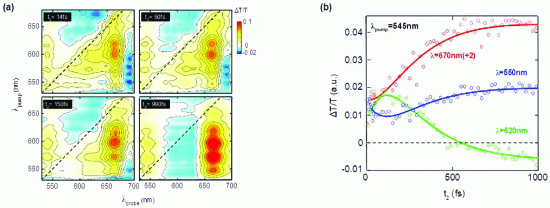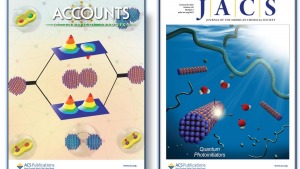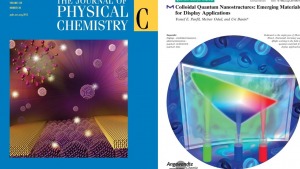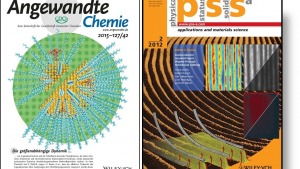Citation:
Abstract:
"Colloidal semiconductor quantum dots (QDs) are promising for solar energy harvesting, particularly the excess energy of hot and/or high energy excitons before they relax, which would allow efficiencies beyond the Shockley-Queisser limit. Going beyond QDs, nanostructured materials such as nanorods (NRs) are attracting significant attention, as their geometrical differences with QDs imply different electronic properties, and their one-dimensional character makes them ideal building blocks for hybrid nanostructures [1,2]. Experimental observation of the charge relaxation pathways in such nanostructured systems is challenging, as high resolution in time (to resolve ultrafast processes) and in excitation energy (to distinguish the relaxation pathways of different excitons) are simultaneously required, which are incompatible with regular transient absorption (TA). Both requirements are met by two-dimensional electronic spectroscopy (2DES), which can be thought as an extension of TA employing two phase-locked pump pulses. Acquiring the data as a function of the delay t 1 between them and using Fourier transform spectroscopy yields a correlation map between signal excitation and signal emission energies for each waiting time t 2 [3]. As it provides resolution in the excitation energy, 2DES is ideal to study systems with spectrally congested electronic transitions and was applied to study many nanostructured systems."
Going beyond QDs, nanostructured materials such as nanorods (NRs) are attracting significant attention, as their geometrical differences with QDs imply different electronic properties, and their one-dimensional character makes them ideal building blocks for hybrid nanostructures [1,2]. Experimental observation of the charge relaxation pathways in such nanostructured systems is challenging, as high resolution in time (to resolve ultrafast processes) and in excitation energy (to distinguish the relaxation pathways of different excitons) are simultaneously required, which are incompatible with regular transient absorption (TA). Both requirements are met by two-dimensional electronic spectroscopy (2DES), which can be thought as an extension of TA employing two phase-locked pump pulses. Acquiring the data as a function of the delay t 1 between them and using Fourier transform spectroscopy yields a correlation map between signal excitation and signal emission energies for each waiting time t 2 [3]. As it provides resolution in the excitation energy, 2DES is ideal to study systems with spectrally congested electronic transitions and was applied to study many nanostructured systems."





